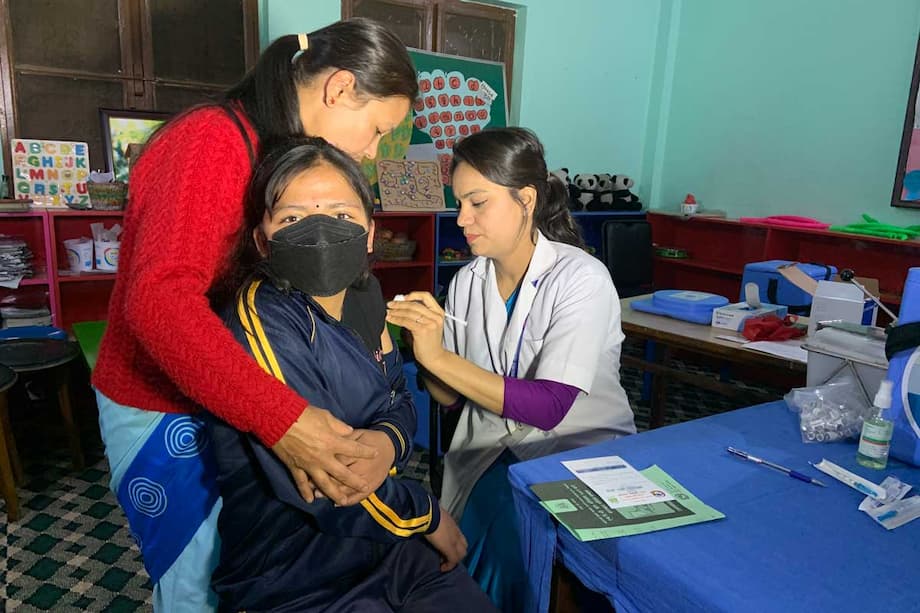Arson and Outrage Collide With Public Health
During recent anti-corruption demonstrations across Nepal, several government buildings and health facilities were set on fire. At least 13 vaccine cold chain units and sub centers burned, destroying thousands of doses of childhood vaccines and crippling storage capacity in key districts. Preliminary tallies from health officials count at least 37 health facilities completely destroyed, with assessments ongoing. The damage cuts into the backbone of routine immunisation, which, in Nepal, delivers 13 free vaccines to protect children from measles rubella, pneumonia, tuberculosis, diphtheria, pertussis, tetanus, hepatitis B, rotavirus, Japanese encephalitis, and typhoid. The Ministry of Health and Population had planned to add human papillomavirus vaccine this fiscal year. That timeline now faces new uncertainty.
- Arson and Outrage Collide With Public Health
- What Happened Across Nepal
- Why Cold Chain Matters
- Immediate Risks for Children
- Damage Assessment and Budget Gaps
- How Services Can Continue Now
- Security, Accountability, and Community Trust
- Partners and International Support
- Building a More Resilient Cold Chain
- Key Points
The arson attacks scorched cold rooms, ice lined refrigerators, temperature monitors, and crucial supplies that keep vaccines safe within a narrow temperature range. Even vials that escaped the flames may have been exposed to heat that compromises potency. Officials warn that routine sessions will be disrupted in several districts until alternative storage and supplies are arranged.
Sites reported destroyed include vaccine sub centers in Nepalgunj, Tulsipur, Morang, Birgunj, Golbazar, Shuklaphanta, Godawari, and Biratnagar, along with Khaireni and Rapti municipalities. The provincial health emergency operation center of Koshi province was also affected. Public health leaders describe the deliberate targeting of vaccine stores as without precedent in Nepal in recent decades.
What Happened Across Nepal
In multiple towns and cities, crowds attacked government offices during protests against corruption. Fires consumed storage rooms that housed vaccine refrigerators, freezers for specific products, backup generators, cold boxes, data loggers, and reserve stocks of diluents and syringes. Health workers who arrived after the flames subsided found charred remnants where critical equipment once stood. Many of the cold chain units had been set up with support from development partners, including UNICEF, and some equipment had been imported from Japan.
The number of destroyed vaccine stocks is still being counted. Cold chain capacity is most vulnerable to heat and power failure. Even a short temperature excursion can render vaccines unsafe. When fire and smoke enter storage spaces, the only safe action is to discard affected vials. Losing refrigerators is equally damaging because each unit supports regular outreach sessions in surrounding wards and villages. A single sub center can supply multiple immunisation posts, meaning that each burned facility removes access for many communities at once.
Why Cold Chain Matters
Vaccines are biological products. They must be kept within a narrow temperature window, typically between 2 and 8 degrees Celsius, from the moment they leave a manufacturer to the moment they are injected. This unbroken series of safe conditions is called the cold chain. If temperatures rise too high or drop too low, a vaccine can lose potency. The vial may look normal, yet the active ingredients can be damaged. Freezing can also ruin certain vaccines. For this reason, health systems invest heavily in reliable refrigerators, cold rooms, insulated carriers for transport, and devices that record temperatures every step of the way.
Nepal’s landscape, with high mountains and remote valleys, makes cold chain management complex. Reaching a health post can require long road journeys or foot travel. Power supply can be inconsistent. Health workers use ice lined refrigerators, cold boxes with ice packs, and temperature monitors to protect vaccine quality on the move. Many vials carry a small sticker known as a vaccine vial monitor, which darkens in response to heat exposure. After a fire, quality assurance protocols require close review of these monitors and temperature logs. If there is any doubt about safety, vaccines are discarded. That protects children from receiving a dose that will not work.
Cold chain disruptions are a known challenge in low income settings. Studies during the COVID-19 period highlighted gaps in logistics and coordination within Nepal’s restructured federal system, and research across low income countries found that storage, transport, and staffing are common chokepoints. Donor support has helped strengthen equipment and training, yet emergency shocks such as arson, floods, or earthquakes can wipe out capacity in minutes.
Immediate Risks for Children
Routine immunisation works only when children receive doses on time. When storage units burn, sessions halt and appointments get missed. The first risk is interruption of measles rubella vaccination. Measles is extremely contagious. Communities need around 95 percent coverage to prevent spread. If coverage dips, outbreaks can begin with a few missed cohorts and then surge. Diphtheria and pertussis can reappear in pockets of low coverage. In the Tarai and other areas where Japanese encephalitis is present, any slowing of routine services raises concern for seasonal spikes.
Nepal’s immunisation programme has been a public health success. Coverage gains have helped cut under five mortality, and the country recently eliminated rubella as a public health problem. That achievement required years of consistent delivery through thousands of outreach sessions. A sudden loss of storage capacity does not erase those gains, yet it can create gaps that diseases exploit. Children who miss their scheduled windows are not protected until they receive catch up doses. Older siblings become reservoirs that can move infection across families and wards.
There is also a risk that fear and confusion after violent incidents can spread misinformation. When parents see burned clinics on social media, they may think services are suspended everywhere. Health workers will need clear communication to direct families to functioning sites and to explain that vaccines from unaffected stores remain safe and effective.
Damage Assessment and Budget Gaps
Officials say there is no immediate budget to replace destroyed cold chain units. A refrigerator or small cold room is more than a box that plugs into a wall. It requires trained technicians for installation, consistent power, secure space, and periodic maintenance. Procurement can take weeks to months. Shipping and customs clearance add time. Many of the units that burned were purchased with support from international partners, so replacements may also depend on external funding cycles.
The preliminary count lists at least 13 cold chain units lost and at least 37 health facilities destroyed in the arsons. Final numbers could change as assessments reach remote areas. In the meantime, districts need to map where children are scheduled for doses and reposition existing equipment to the highest priority locations. That triage is resource intensive. Tracking stocks, revising microplans, and rerouting transport all take staff time at a moment when offices are also dealing with damage, cleanup, and security concerns.
How Services Can Continue Now
There are practical steps that can keep children on schedule while replacements are arranged. Unaffected districts can host emergency storage and lend portable cold boxes to neighboring areas. Provincial stores can release buffer stocks and assign delivery teams with conditioned ice packs to run temporary supply lines. Facilities that still have working cold rooms can extend hours and add extra immunisation days to absorb patients from closed sites. Mobile teams can deliver vaccines in schools or community halls if cold boxes and temperature monitors are available.
Quality assurance must guide every decision. Vaccines suspected of heat exposure should be separated and marked for discard. Staff should review temperature logs and vaccine vial monitors before each session. Health posts must keep careful records to identify children who missed visits and schedule catch up sessions without delay. Local governments can help by announcing alternative sites through radio, social media, ward offices, and schools. Families need clear instructions on where to go and what to bring so that outreach sessions run smoothly.
The planned introduction of human papillomavirus vaccine for adolescent girls remains a public health priority. Districts can proceed with introduction in unaffected areas while maintaining flexibility in places where storage must first be restored. Early communication will help schools and parents plan for new schedules. If resources allow, combined outreach that offers HPV for adolescents on the same day as infant vaccines for younger siblings can reduce travel burden for families.
Security, Accountability, and Community Trust
Burning vaccine stores during protests crosses a line that endangers children who had no role in the grievances at stake. Health leaders and officials describe the destruction of cold chain units as a serious crime. Even during the years of armed conflict, health facilities and vaccine stores were rarely targeted. Preventing repeat incidents calls for visible security measures at storage sites and community agreements to protect neutral health spaces during demonstrations.
Rebuilding trust will also require community engagement. Civil society leaders, local officials, and health workers can jointly affirm that immunisation is a nonpolitical service that protects every family. Securing storage sites with better locks, alarms, and fire extinguishers can reduce risk. Coordinating with protest organizers to respect health facilities as neutral spaces can help prevent repeat incidents. Clear messaging that services continue in nearby locations can prevent vaccine hesitancy fueled by fear or rumor.
Partners and International Support
Nepal has longstanding partnerships that support its immunisation system. UNICEF has invested in cold chain equipment and logistics over many years. The World Health Organization provides technical guidance and training. Gavi helps finance vaccines and system strengthening. Humanitarian groups with logistics expertise, including organizations that expanded cold chain capacity during the COVID-19 response, can contribute equipment and technical support. Past disaster responses in Nepal show that partners can move quickly when requests are clear and coordination is strong.
Outside support is most effective when it aligns with district level needs. Priority requests may include ice lined refrigerators, solar direct drive models for areas with unreliable power, portable cold boxes and carriers, temperature data loggers, and vehicles or fuel to run temporary delivery routes. Emergency funding can cover overtime for health workers who run extra clinics and can pay technicians to install and certify new equipment. Donations of vaccines are helpful only when matching storage and transport capacity is available. The immediate gap in equipment must be closed for new supplies to be useful.
Building a More Resilient Cold Chain
The arsons exposed how quickly a small number of fires can disrupt many communities. Stronger systems can limit that risk. Practical measures include placing refrigerators in secure rooms with fire resistant doors, installing smoke detectors, and keeping fire extinguishers where staff can reach them. Storing flammable materials away from cold rooms reduces hazard. Facilities can maintain photo inventories of equipment and serial numbers to speed insurance claims and replacement orders after an incident. Regular drills can train staff to evacuate safely and protect records.
Technology can help. Remote temperature monitors that send text alerts when a fridge warms can prevent losses from unnoticed power outages. Solar direct drive units reduce dependence on grid power. Simple logbooks that are consistently filled remain powerful tools to spot trends and to guide decisions during emergencies. At the administrative level, clear protocols to activate mutual aid across districts can move equipment where it is needed most. A small contingency fund at provincial level can shorten procurement time for critical replacements. Finally, investing in additional training for cold chain technicians and vaccinators builds a workforce that can restore services quickly after a shock.
Key Points
- At least 13 vaccine cold chain units and sub centers were destroyed during recent arson attacks linked to anti-corruption protests.
- Preliminary reports indicate at least 37 health facilities have been completely destroyed, with assessments still underway.
- Thousands of doses of childhood vaccines were lost, threatening routine immunisation in several districts.
- Destroyed sites include Nepalgunj, Tulsipur, Morang, Birgunj, Golbazar, Shuklaphanta, Godawari, Biratnagar, Khaireni, and Rapti, and the Koshi provincial health emergency operation center was affected.
- Nepal provides 13 vaccines free of cost and had planned to add human papillomavirus vaccine this fiscal year.
- There is currently no immediate budget to replace the destroyed cold chain units, many of which were supported by development partners including UNICEF.
- Cold chain failure can render vaccines ineffective even if vials appear intact, so affected stocks must be discarded to protect children.
- Health workers can use nearby district stores, portable cold boxes, and catch up clinics to keep children on schedule while replacements are arranged.
- Experts warn of increased risk of outbreaks, especially measles, if coverage drops, even as WHO has recognized Nepal’s recent progress, including rubella elimination as a public health problem.




